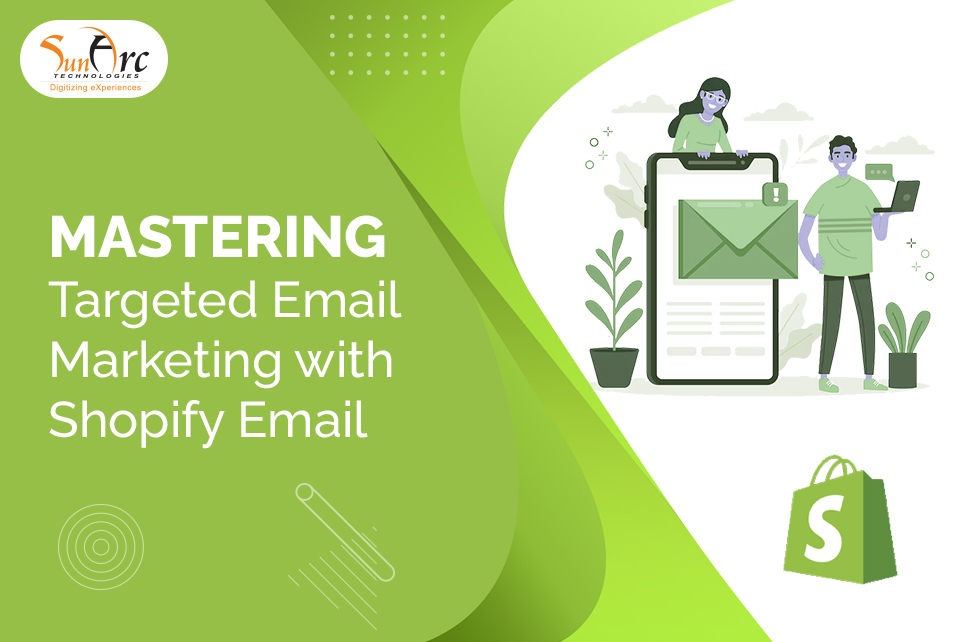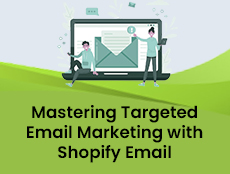Are you among those who, on one hand, believe that email marketing is outdated or ineffective – yet on the other hand, consistently witness brands leveraging it to drive impressive results? You’re almost ready to write off email as a viable channel, but then you come across another brand aggressively optimizing for email signups, and it leaves you wondering: What are they doing differently? What am I missing?
Well, the answer is simple. “Targeted”!, yes just that one word, Targeted email marketing is what’s making all the difference here. While you are sending generic emails to all your customers, they send you emails so PERSONALIZED you feel like being stalked closely.
And platforms like shopify are making it simpler. Keep reading, and you’ll soon get a hold of what they are doing and how some brands are able to offer you just what you want right when you want it in your inbox. Let’s take a closer look into Shopify emails features that make your email marketing campaigns so impactful.

1. Laying the Foundation: Meet Your Audience Segments
Before you dive into the features of Shopify Email, it’s absolutely critical that you first take the time to get to know your audience segments. Here’s how:
- Create Your Custom Audience Profiles:
Skip the basic criteria of age and location. Focus on deeper level like, what your customers like, what they’ve purchased in the past, how they shop online and what challenges they’re trying to overcome. This is significant in targeting appropriate people with improved product suggestions, finally leading profitable digital marketing.
- How To Analyze Your Customer Data In Your Business:
Shopify provides you with valuable customer data. Test reports on purchase frequency, average order size and retention. This data is essential to enhance your e-commerce strategy and increase sales.
- Identifying Key Customer Segments:
Once your analysis is complete, use it to identify the most relevant customer segments for your buds. Here are a few examples:
– New Customers: Make them feel great to meet you and do business with you.
– Loyal Customers: Thank them for their loyalty and ask them to spread the word.
– Cart Abandoners: Send a gentle nudge to complete the purchase.
– Customers Who Have Showing Interest in Certain Categories: Give relevant or exclusive new arrivals or promotions to them.
2. Diving into Shopify Email’s Targeting Features: The How-To Guide
Now that you’ve got a solid grasp of your audience segments, let’s dive into how Shopify Email helps you connect with them effectively.
1. Creating Customer Groups within Shopify Email:
1) Start by heading over to the “Customers” section in your Shopify admin.
2) Next, click on “Create customer group.”
3) Give your customer group a catchy name (like “Abandoned Cart – High Value”).
You’ll see a variety of filters you can use to shape your segment. These filters might include:
- Order History: Number of orders, total spent, specific products bought.
- Customer Tags: Tags that can be applied manually or automatically based on customer actions or traits.
- Email Subscription Status: Whether they’re subscribers or non-subscribers.
- Location: The geographic area where your customer is based.
- Customer Creation Date: The date they first became a customer.
- Abandoned Checkout: Customers who started but didn’t finish a purchase.
2. Choose the filters that matter to you and set their criteria (for example, “Number of orders” “is greater than” “3”).
3. Finally, click “Save group.” Shopify will automatically fill this group with customers who fit your criteria and will keep it updated as customer data changes.
3. Making the Most of Customer Tags for Effective Segmentation:
Another useful element offered by Shopify is “Customer tags”. An incredible way to build highly tailored segments that help you go beyond the basics. For example, you can tag customers who:
- Copied any Coupon Code.
- Took part in a certain promotion.
You can apply these tags manually or automate this process with Shopify apps. Once tagged, filtering and creating customer groups in Shopify Email becomes super simple and helps curate personalized email campaigns.
4. Using Shopify Audiences for Lookalike Targeting:
One of the best tools brought up by Digital marketing is “Lookalike Audience”. The idea behind lookalike audiences is to find customers who have similar traits to your existing customers and target them with your campaigns. This approach helps you reach out to potential high-converting individuals quickly and offers better ROAS.
Writing Persuasive Targeted Email Copy that Converts
With that, you’ve been able to identify various audience segments. It’s now time to organize the email campaign for them.
1. Personalization Takes Center Stage:
Move beyond basic first-name injection. Real personalization means mapping the entire body of the email content – including the products to be showcased, the promotions made, and wording – to what the recipient and their segment likely to be specifically interested in or need.
Examples:
- Presenting products of categories a user has bought earlier.
- Offering a discount on items they previously considered but did not buy.
- Publishing blog posts or tutorials based on their previous purchase history or Interests expressed.
2. Clear Calls to Action (CTAs) for Each Segment:
Your CTAs need to be clear, precise, and directly relevant to the aim of the email and the recipient’s stage in their customer lifecycle.
Examples:
- For Product Recommendations: “Shop These New Arrivals,” “Discover Similar Items.”
- For Educational Content: “Learn More,” “Read the Full Guide.”
- For Loyalty Offers: “Redeem Your Exclusive Discount,” “Claim Your Reward.”
- For Abandoned Carts: “Complete Your Order,” “Go Back to Your Cart.”
3. The Storytelling Effect in Targeted Campaigns: Connect with your audience on a more intimate level by employing storytelling in your targeted campaigns.
Examples:
- Giving a customer testimonial speaking to the benefit of a product related to the recipient’s segment.
- Telling one of your brand stories that resonates with the passions or values of a specific customer group. Measuring Success and Refining Your Strategy Sending targeted email campaigns is a constant process. To ensure that your efforts are rewarded, it’s critical that you monitor important metrics and keep tweaking your strategy.
Conclusion
Harness the power of Shopify Email to transform your e-commerce marketing strategy. With its intuitive interface and robust features, Shopify Email empowers online stores to run highly targeted campaigns that drive real results.
Success in e-commerce starts with understanding your customers. By segmenting audiences, crafting personalized messages, and consistently monitoring campaign performance, businesses can build deeper connections, increase conversions, and maximize growth.
SunArc Technologies brings its deep expertise in user experience design and digital innovation to elevate your Shopify email marketing. From customer segmentation strategies to personalized campaign flows and performance optimization, SunArc ensures your email marketing aligns seamlessly with your brand goals. Partner with us to turn simple emails into powerful conversations—and transform clicks into loyal customers.

